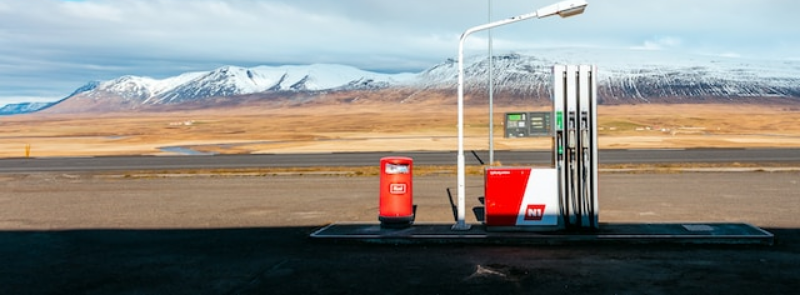
When It Occurs
Annually Third Thursday of June
Timeline
Days Passed (928)
# Hashtags
#NationalDumpThePumpDay #PublicTransportation
National Dump The Pump Day happens each year on the third Thursday of June, aiming to heighten public awareness regarding gasoline consumption. It advocates for individuals to opt for public transportation or cycling instead of relying on cars. This shift not only saves money but also lightens the environmental load. It's an ideal opportunity for people to explore alternative methods of commuting to stores or workplaces without relying on gasoline consumption.
History and Origins
- First Celebration: National Dump the Pump Day was established by the American Public Transportation Association (APTA) and first observed on June 16, 2006. It was initiated as a response to rising gas prices and increasing awareness of environmental issues. The idea behind the day is to show how using public transportation can save money, reduce carbon footprints, and conserve energy.
- Timing: It usually falls on the third Thursday in June, strategically chosen to coincide with the summer travel season when gas prices tend to rise, making it an ideal time to promote cost-effective and eco-friendly transportation alternatives.
Purpose and Objectives
-
Promote Public Transportation: The main goal of National Dump the Pump Day is to encourage people to try public transit as a viable option for their daily commutes or errands. It aims to demonstrate the convenience, affordability, and sustainability of public transportation.
-
Economic Benefits: By "dumping the pump," or choosing not to fuel up a personal vehicle, participants can save money on gas, vehicle maintenance, parking fees, and tolls. APTA frequently cites that using public transit can save individuals thousands of dollars annually compared to the costs associated with owning and operating a car.
-
Environmental Impact: The day underscores the environmental benefits of public transportation, such as reducing greenhouse gas emissions, air pollution, and traffic congestion. Public transportation can significantly reduce the carbon footprint per individual, as buses, trains, and other transit systems produce far fewer emissions per passenger compared to private vehicles.
-
Health and Wellness: Choosing to ride public transportation often involves more physical activity than driving, such as walking to and from transit stops. The day also draws attention to the health benefits of a more active lifestyle and the reduction of stress from avoiding traffic jams.
Participation and Activities
National Dump the Pump Day is celebrated in various ways, often led by local transit agencies, environmental organizations, and municipalities:
-
Discounts and Free Rides: Many public transportation systems offer incentives such as free or reduced fares to encourage participation. This is an opportunity for people who do not typically use public transit to try it out without financial commitment.
-
Community Events: Cities and transit agencies may host special events, rallies, or educational workshops focused on the benefits of public transit. These events often include information about how to use the transit system, environmental impacts, and the long-term cost savings of leaving the car at home.
-
Promotional Campaigns: Social media campaigns are commonly used to raise awareness about National Dump the Pump Day. Using hashtags like #DumpThePump, individuals and organizations can share their experiences and promote public transportation options.
-
Public Engagement: Local government officials, environmental advocates, and transit organizations might engage with the public through talks, advertisements, or online platforms to discuss the benefits of a more sustainable transportation infrastructure.
Benefits of Public Transportation
-
Cost Savings: According to APTA, individuals who use public transportation can save around $10,000 annually, depending on their commute length, gas prices, and car ownership costs.
-
Environmental Sustainability: Public transportation produces less pollution per person compared to private vehicles, making it a more environmentally friendly option. One person switching to public transportation can reduce their daily carbon emissions by 20 pounds.
-
Traffic and Congestion Relief: Increased use of public transportation reduces the number of vehicles on the road, easing traffic congestion, improving air quality, and reducing the need for expensive infrastructure investments in road expansions.
-
Energy Conservation: Public transportation is more energy-efficient. A bus, for example, can carry far more passengers than the number of cars it would take to transport the same amount of people, resulting in lower fuel consumption per person.
Challenges and Considerations
While National Dump the Pump Day aims to promote public transit, several factors influence people’s ability and willingness to switch from cars to buses, trains, or other forms of mass transit:
- Accessibility: In some areas, especially rural or suburban regions, public transit options may be limited or non-existent, making it difficult for residents to participate.
- Convenience: In many parts of the U.S., the convenience of driving—such as direct routes, faster travel times, or the comfort of a private vehicle—remains a significant barrier to public transportation adoption.
- Infrastructure: Public transit infrastructure varies significantly by city. While some areas have well-developed systems with frequent service, others may struggle with outdated equipment, long wait times, or overcrowded vehicles.
Conclusion
National Dump the Pump Day is a reminder of the benefits of public transportation, both for individuals and for society as a whole. From reducing personal costs and environmental impact to improving public health and easing traffic, the day encourages a shift toward more sustainable urban living. By raising awareness and promoting the use of public transit, National Dump the Pump Day plays a key role in advocating for cleaner, more efficient transportation options across the U.S.


